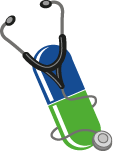Key messages for long-term care facilities - physician and managers
These key messages were developed as part of a toolkit aimed at promoting prudent use of antibiotics in hospitals and other healthcare settings through dissemination of evidence-based educational and information materials.
Download

Tasks
Core tasks to improve antibiotic use in your facility include:
1. Education of medical and nursing staff, targeting areas where antibiotic misuse is common [109,110]:
- antibiotic prophylaxis;
- antibiotic use in asymptomatic patients with positive cultures (colonisation);
- topical antibiotics; and
- excessively long durations of treatment.
2. Education of patients and their families on the risks of selecting for antibiotic-resistant bacteria when using antibiotics unnecessarily (e.g. asymptomatic bacteriuria, viral respiratory tract infections) [109,110].
3. Using clinical pathways and evidence-based guidelines for diagnosing, treating and managing the most common infections (e.g. pneumonia, upper respiratory tract infections, skin and soft tissue infections, and urinary tract infections), and taking into account local antimicrobial susceptibility data [109].
4. Reassessing antibiotic treatments in light of clinical conditions at 48–72 hours, or as soon as microbiological results are available, to [31,42,70-72]:
- change to a narrow-spectrum antibiotic;
- continue or stop antibiotic therapy;
- switch to oral antibiotic therapy.
5. Avoiding diagnostic tests and cultures in asymptomatic patients [56,111].
Things you can do
6. Implement infection prevention and control measures together with infection prevention and control professionals [expert consensus].
7. Take a thorough patient history when you prescribe an antibiotic, including recent antibiotic use, drug allergies, use of immunosuppressive therapy, and risk factors for antibiotic resistance (for example, recent hospitalisation, recent procedure or recent travel outside of Europe) [31].
8. Always perform a clinical examination of the patient before prescribing an antibiotic [31].
9. If in doubt before you prescribe an antibiotic, you should [25,26,53,70] [expert consensus]:
- Check local, regional and national epidemiological data;
- Seek guidance and advice from a senior colleague or a member of the antibiotic stewardship team.
10. Only start antibiotic treatment if there is evidence of a bacterial infection, and do not treat colonisation [31].
11. Avoid unnecessary antibiotic prophylaxis (e.g. urinary tract infection prophylaxis) [111].
12. Ensure that cultures are taken before starting antibiotics [31,42,70,71].
13. Document the indication of antibiotic treatment, drug choice, dose, route of administration and duration of treatment in the patient chart [31,42,70,71].
14. Answer the following key questions when reassessing antibiotic therapy after 48-72 hours (or as soon as microbiological results are available) [42,70]:
Does the patient have an infection that will respond to antibiotics?
If yes:
i. Is the patient on the correct antibiotic(s), correct dose, and correct route of administration?
ii. Could an antibiotic with a narrower spectrum be used to treat the infection?
iii. For how long should the patient receive the antibiotic(s)?
15. Promote vaccination programmes for residents and staff [expert consensus].
16. Follow infection prevention and control measures that are already established in your setting. If you see staff members at the hospital or healthcare setting who breach guidelines or protocols, ask them why they are doing so and provide them with tools to understand what they are doing wrong [69] [expert consensus].
17. Regularly participate in training courses and in meetings that support the implementation in the hospital of: a) prudent antibiotic use, b) evidence-based, local antibiotic guidelines, and c) infection prevention and control measures [52,53].
18. Organise educational events and campaigns that provide residents with information on prudent antibiotic use.
19. Ensure that residents (and their families) understand the reasons for antibiotic therapy, and key points related to antibiotic use, including to [expert consensus]:
a) Take antibiotics exactly as prescribed;
b) Never save antibiotics for later use;
c) Never use leftover antibiotics from previous treatments;
d) Never share leftover antibiotics with other residents or other people.
20. Regularly organise audits/surveys of antibiotic prescribing practices and of healthcare-associated infections [93].

